[Here’s a link to other forays around my map.]
Today: blackthorn blossom lining every lane. Late March. (Quick semantic aside: Hawthorn and blackthorn are two of the most easily confused species. Blackthorn blossoms before its leaves start to show, whereas hawthorn flowers after its leaves have emerged. This is one of the best tips for identifying the two species in spring.) We use many cues to connect what we see with a time of year (fairy lights in windows at Christmas, the smell of fireworks at the start of November), but making a conscious business of being observant each week on my local map is building a far richer natural calendar in my mind. Since beginning, I have noticed the year’s first snowdrops, fieldfares, blossom, and the first chiffchaff chirping away, its call easily confused with a great tit’s ‘TEACH-er-TEACH-er’ chirp. The chiffchaff sounds like a tiny blacksmith hammering this side then that side of an anvil, ‘chiff-chaff-chiff-chaff’ all day long.
I know that not many people get excited by a little brown bird with a monotonous song. But I am learning to love our everyday nature: not only to celebrate the awesomeness of a feisty six gram bird that has flown all the way here from Africa, but also to be more aware of my awareness. I am learning to appreciate so many things that I have literally never noticed before.

I began today’s grid square on a busy road, with cars swooping to and fro, demanding all my concentration. A workman was battering away at the pavement with a pneumatic drill. I had to turn off the road into a quiet cul de sac of newly-built houses before I could quieten my mind enough to settle into the slow rhythm of exploring.
Located literally a stone’s thrown from the railway station, this was prime real estate for people commuting into London. The homes were huge, swollen like a balloon as though they had been inflated with hot air (or hefty annual bonuses). They were all nice and big with shiny cars outside, but this had come at the expense of any outdoor space. About ten of these new, identical houses were squashed into a plot of land which once would have been the garden area of a similarly-sized home. This tug between homes and natural space was to be the over-riding theme of today’s ride.
After stepping aside to let an old lady pass on her squeaky mobility scooter, I pedalled carefully down the inevitable footpath-totally-wedged-between-high-fences behind the railway station into a sweeping estate of circular residential roads lined with 1960s bungalows set well back from the street in tidy gardens. One home was called Crianlarich, and its garden filled with purple heather. I wondered what might have brought the owners to this crowded corner of southern England from the beautiful gateway to the highlands.
Bungalow, from the Hindi word “bangla”, meaning “belonging to Bengal”, was used to described detached cottages built for early European settlers in India. They gained an association with a healthy outdoor lifestyle among the Raj, many of whom returned to the UK, extolling their charms. The first development including houses sold as “bungalows” in the UK opened in 1869. Bungalows caught on during the interwar years, with growing suburbs and garden cities fulfilling a demand for a less urban existence. However, architectural critics were scathing – nicknaming them “bungaloid growths”, and blaming them for ruining the countryside. The “bungalow now stands for all that is vile and contemptible”, wrote Thomas Sharp, in Town and Countryside, in 1932. With the UK’s population ageing, demand for single-storey homes is likely to grow. But developers dealing with rocketing land prices are under pressure to build further upwards.
“Bungalows aren’t the most valuable use of a building plot,” says property expert Henry Pryor. “You get far more value from a two or three-storey building than you could get from a bungalow.”
Last year, the government put the average price in England per hectare of land – with permission to build on – at £6m. Meanwhile, the UK’s population is projected to increase to 74.3 million by 2039, which is likely to make land even more costly. But much of this expansion will occur because people are living longer, meaning a greater demand for accessible housing.
Once again, a conflict between the urgent need for housing, and the finite amount of natural space available to build on. Although the residents of these bungalows are probably no longer involved in the daily rat race of scrabbling for space on crowded commuter trains, many other folk around here are. Street signs bore an extra panel warning of ‘No parking. Wheel clamping in operation £150 release.’
The next circle of homes I reached were not yet as affluent as the new builds by the station, nor retirement homes like the bungalows. This was the domain of the middle manager commuter, successful but still striving upwards, although I’m sure the rows of detached mock Tudor homes were all extremely expensive.
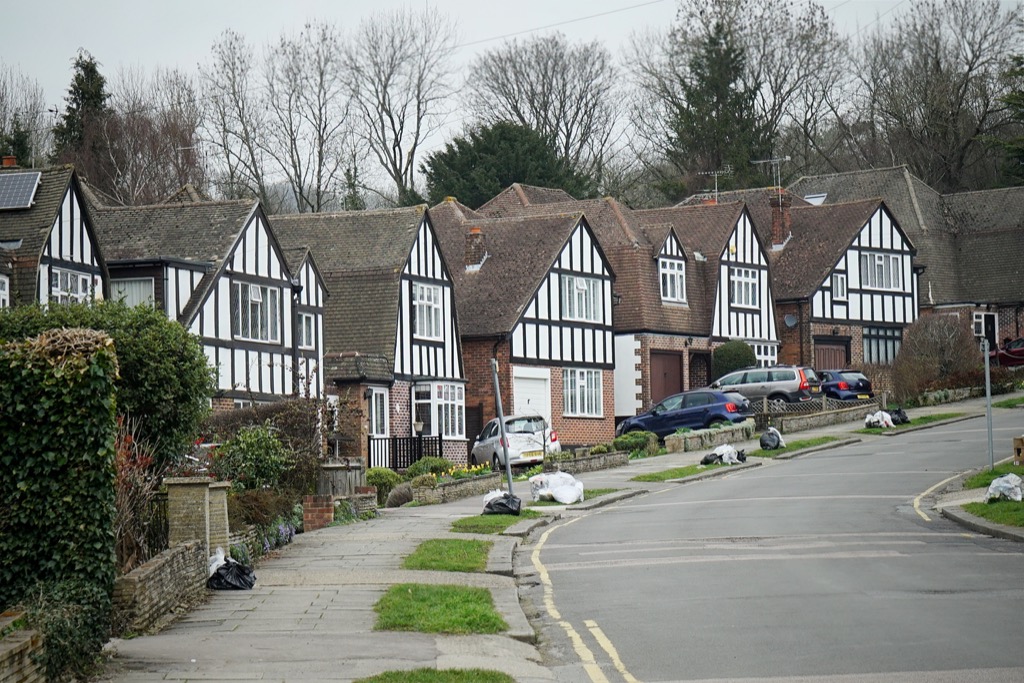
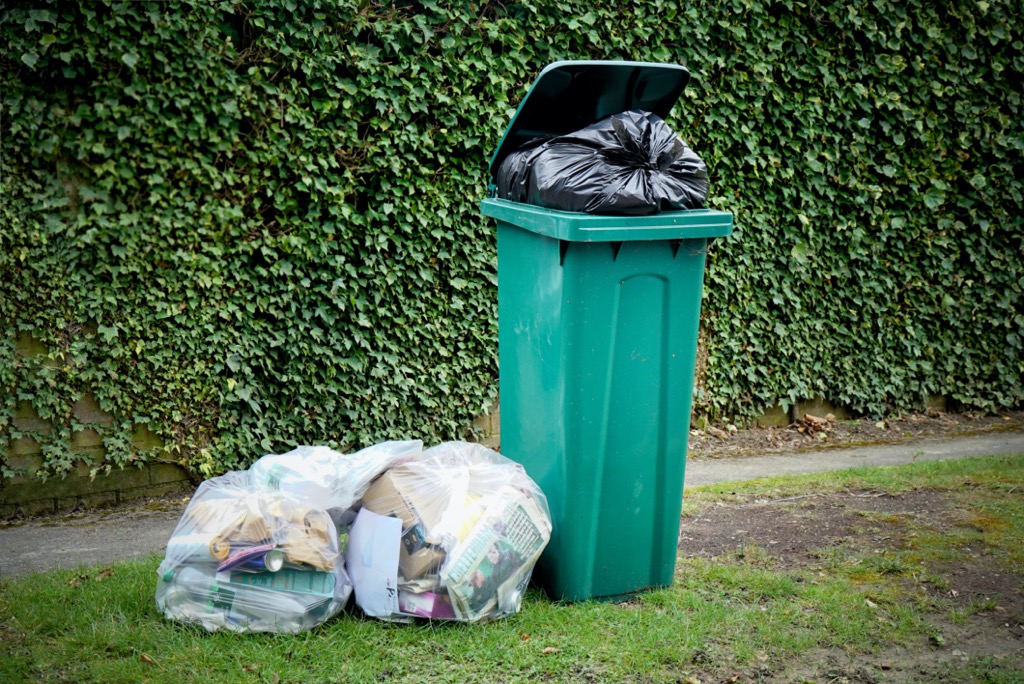
It was bin day today, and outside every home was a full wheelie bin or two. It is an extremely efficient system that whisks away all our rubbish and recycling every week. But perhaps it is too efficient, for once it’s out of sight we forget all about its impact. UK households produce around 27 million tonnes of waste a year. That’s equivalent to 409 kg per person – roughly the weight of four adult giant pandas. It’s mostly made up of food scraps, newspapers, cardboard, glass bottles and plastics. Much of it could be avoided. A study by the University of Sussex found that the average family in the UK throws away 20% of all the food they buy, costing up to £800 a year.
Rob Greenfield wanted to create a visual that would help people understand just how much trash they create and inspire them to make positive changes. So for 30 days, he lived just like the average American and he wore every piece of trash he created. 4.5 pounds a day really adds up when you have to carry it with you everywhere you go. Using a specially-made ‘suit’, Rob carried every piece of rubbish he generated over the month. By the end he was squeezing through doorways, struggling to use the subway barriers, and turning heads wherever he went in New York City. (Watch Rob’s short Trash Man film here.)
‘Enough of houses and aspiration!’ I cried to myself, and pedalled on in search of something natural to soothe my soul. All these sensible houses and lives made me want to run away to somewhere chaotic and wild. I found it, or a semblance of it, in 60 acres of woodland, grassland, and transitional scrub. The trees and scrub are self-sown, and the woodland is being allowed to develop naturally. 40 years ago all this area was arable farm land, yet now it was covered with a dense, virtually impregnable cover of quick-growing trees and bushes. Every species that survives the human madness of the Anthropocene and is not made extinct by us will be absolutely fine once us humans either destroy ourselves or get our act together. (Experts calculate that between 0.01 and 0.1% of all species become extinct each year. If the low estimate of the number of species out there is true – i.e. that there are around 2 million different species on our planet – then that means between 200 and 2,000 extinctions occur every year. But if the upper estimate of species numbers is true – that there are 100 million different species co-existing with us on our planet – then between 10,000 and 100,000 species are becoming extinct each year.)
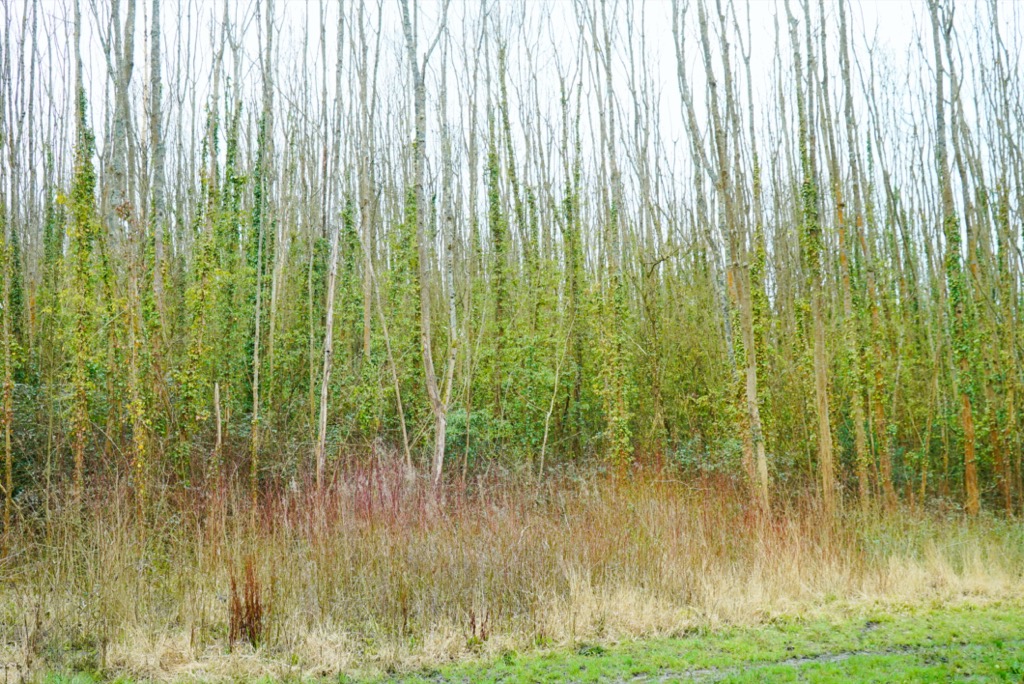

I felt myself unwinding and relaxing at last as I sat on a bench in a clearing in the woodland and took stock of things. The motorway still roared quietly beyond the trees, but it was a low, steady noise that I could tune out of. I looked around at the budding trees and blossom, listened to the birds, and reminded myself to appreciate that it was the week of the spring equinox. When spring rolls around there’s an itch to get outdoors, celebrate Mother Earth and enjoy the season. Ostara, the Pagan festival that comes to us from traditions that pre-date Christianity, formalised it. It fetes the arrival of Ostara, the spring. Ostara is personified by the goddess who represents the dawn, the coming of new light and rebirth through many of the rituals, decorations and gifts that we’re familiar with to this day. They include colourful Easter eggs, rabbits, and baskets filled with sweets. Villages celebrated with bonfires and often ate the remaining ham that had been stored up over the winter. Due to the popularity of these symbols in ancient times they were coopted by Christianity from “pagans” (which to them meant anyone who’d not adopted the religion) into what we know as Easter celebrations.
The festival of Ostara falls around the equinox and is related to spring festivities that celebrate renewal, planting new seeds and fertility. These rites of spring come to us from the Celts and Saxons before they were conquered by the Romans some 2,000 years ago. Ostara (or Eostra) is an Anglo-Saxon goddess who represented dawn, and her name derives from the Germanic word for “east.” She’s depicted as a young woman surrounded in light and budding trees and flowers. The Ostara festival falls on the day of the equinox, the day when light and dark are equal. It also marks the time when more light will begin to come in, days will be longer, nights shorter and food will be more abundant. At a time when people had to store food to last the long harsh winters, this festival was particularly anticipated as a time of renewed hope.

I only sat on the bench for about 20 minutes, but during that time there was a near-constant trickle of passing dog-walkers wearing wellies and swinging long-armed dog ball launchers. The dogs were all shapes and sizes and seemed to have a quirky variety of names. I wondered when Britain became so obsessed with having pets. There are 11 million cats in the UK (incidentally killing 27 million birds each year) and 10 million dogs. 23% of households have a pet dog (although that looks small compared to 46% of Romanian households).
Humans have interacted and engaged with animals for thousands of years, but pet-keeping didn’t become socially acceptable in Britain until the 18th century. Until then, pets were often seen as an elite extravagance, and small dogs frequently appeared in satirical prints of aristocratic ladies, symbolising frivolity and indulgence. A rising Evangelical religious movement placed more emphasis on mothers and fathers in bringing up moral children. In this cultural climate, pet keeping took on a new moral value. From the 1840s, advice books and children’s literature encouraged children to keep small animals such as rabbits, guinea pigs and birds. The idea was to cultivate commitment, caring values and practical skills. Boys in particular were expected to learn kindness from these activities.
Birds played an important part in working class culture. Though some families kept them in poor conditions, most cared for them fondly, valuing the song, movement, and colour they added to home life. Removing them from the wild was more contentious than other animals – in the 1870s, legislation was passed to limit their capture to certain times of year. However, markets trading in wild birds continued to operate well into the 20th century.
From the 1920s, commentators increasingly wrote of relationships between humans and pets, and of training as an important facet of dog ownership. Sociologists Harold Bridger and Stephanie White argued in 1964 that the decline of the traditional “close-knit” family made pets more necessary to bind families together. They predicted that pets would keep becoming more popular long into the future. The booming pet culture in the 21st century appears to fulfil that prophecy.
The northern half of my grid square was covered with tight contour lines. Half of that was a wooded hillside which I was saving for last. And the other half was a housing development carved out of that same hillside. The name Coombe Road was a reminder that where these homes stand there used to be a hillside coombe. I am not picking on these homes in particular, for we all live on streets that used to be natural meadow or forest. Pinned up in my shed I have a map titled London Before The Houses published in 1884. London’s ancient ways (Watling Street, Stane Street) appear, along with various rivers that are mainly underground/culverted now: Bridge Creek, the River Effra, the River Fleet, West Bourne, Ty Bourne and so on. Green shading suggests woodland while the marshes that form the flood plane of the Thames are left in grey. It’s not entirely clear whether London would ever have looked like this. The city has had buildings since Roman times, and 2000 years ago, the River Thames was quite a bit wider than the near present day width that the map shows. But I like it nonetheless and it reminds me to me mindful of the impact that we all make, every day.
I was therefore interested to cycle around these homes knowing that afterwards I could do a direct comparison with what went before by heading up the hill next door. The houses were, frankly, amazing. I have not seen such a collection of lavish homes anywhere else on my map. There were what looked like footballers’ mansions behind high spiked gates, wealthy tech-company homes with huge plate glass windows and sans serif fonts for the house names. Some homes gave the impression of conspicuous aspiration (‘look! We’ve done well and moved up to this beast of a house.’) whilst others suggested inherited affluence (‘well we both grew up in a nice old house in the countryside, so that’s what we were after ourselves. And there’s a fast train into the city for work.’)

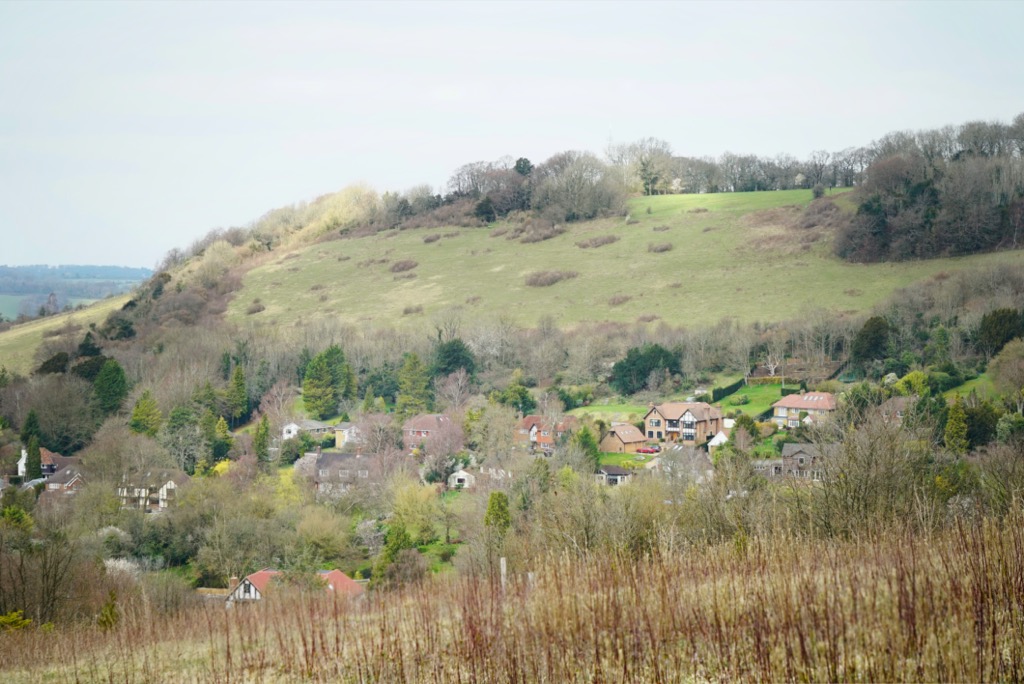
So, yes, the homes were lovely and I’m sure the people who live there are, too. But I think that perhaps the unease I felt as I pedalled along the quiet, litter-free road was about allowing wealth to accumulate from one generation to another (a recipe for unacceptable inequalities) and from the book I am currently reading about the problems that come when our society measures growth and wealth as the key indicator of success. India is classed the world’s most depressed country but the fastest growing large economy in Gross Domestic Product (GDP) terms. Bhutan does not rate well for GDP but measures highly on the basis of Gross National Happiness (GNH).
Kate Raworth, an English economist, has reservations about using GDP as a continuing growth model. She wants to divert from the traditional understanding of success which sees GDP measure economic growth. Her book, titled Doughnut Economics, highlights a need for balance between quality of life and environment for a thriving and inclusive economy. In her Doughnut Economics model, the innermost ring consists of the resources required to lead a good life: the social foundation.
This includes things like housing, food, water health, education, and so on. The outer ring of the doughnut represents the earth’s environmental limits, or as Raworth describes it: the environmental ceiling. Raworth is concerned that economists today are blinkered by a focus on growth at the expense of other vital factors which build a thriving, inclusive economy. Raworth believes that the goal of economics should be “meeting the needs of all within the means of the planet,” and points to a need for economic frameworks which can “make us thrive, whether or not they (make us) grow”.
She maintains that if we find ourselves falling below the social foundation towards the centre of the circle, quality of life rapidly degrades. And, she says, if we shoot beyond the outer, environmental ring we are at risk of creating catastrophes such as climate change. The space between these two rings is the “ecologically safe and socially just space” where she says economic theories should be aiming to deliver us.
Amen, I thought. And went off to cycle through the woods.

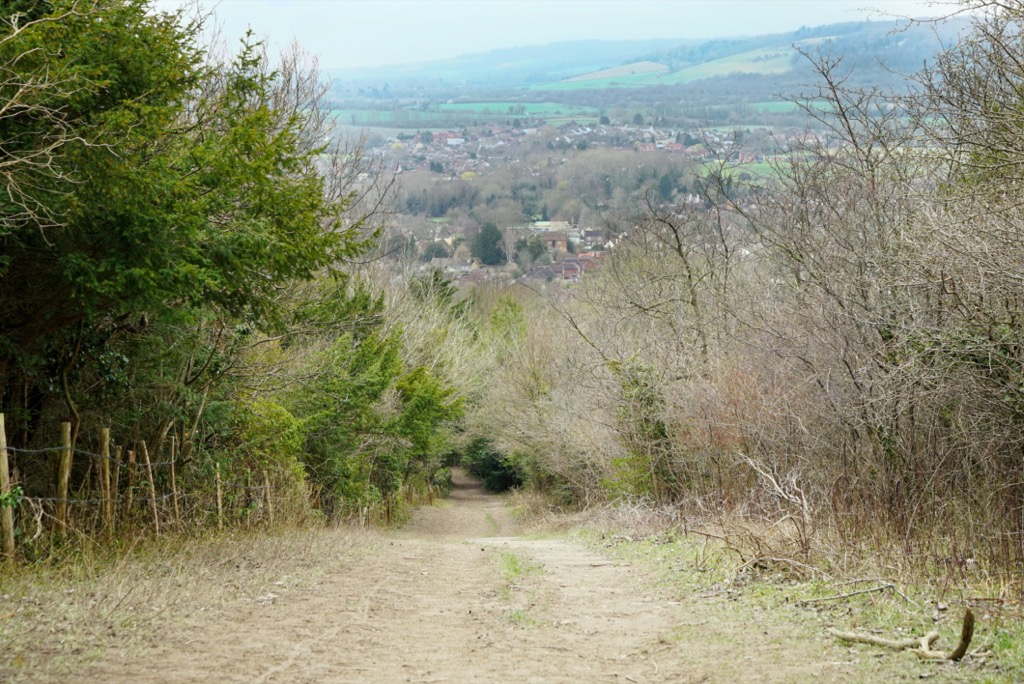



Comments